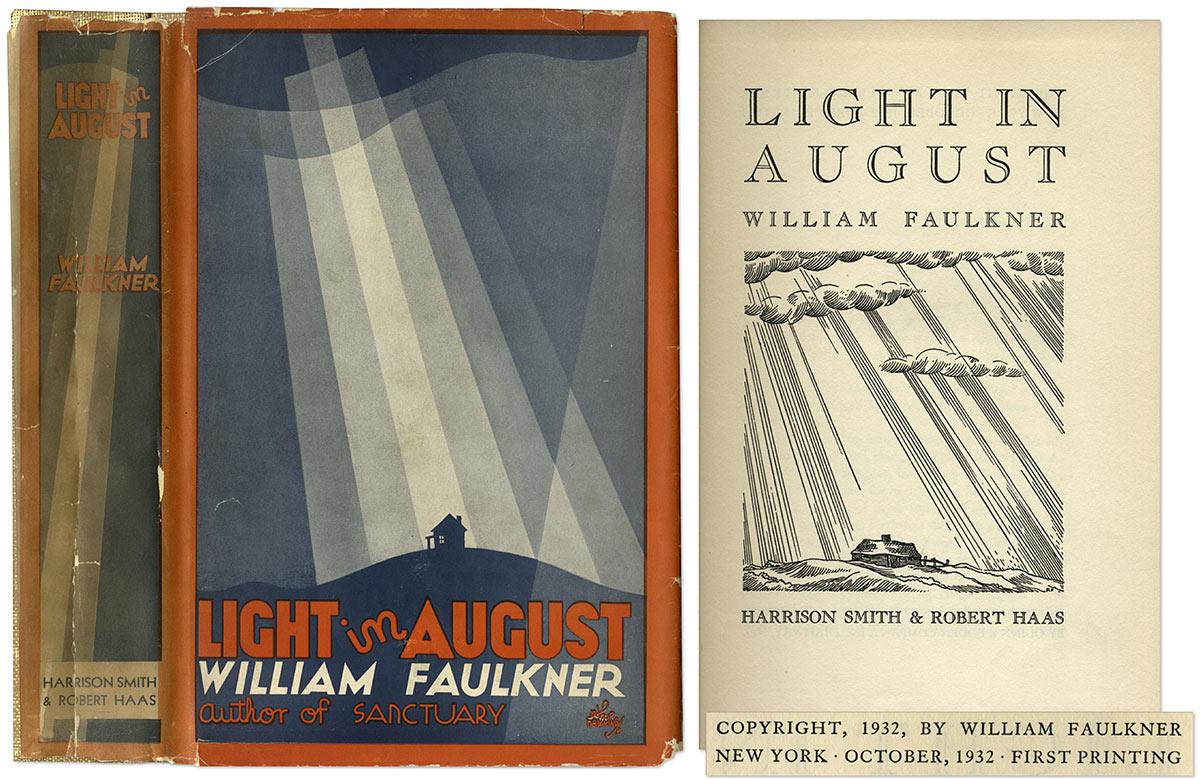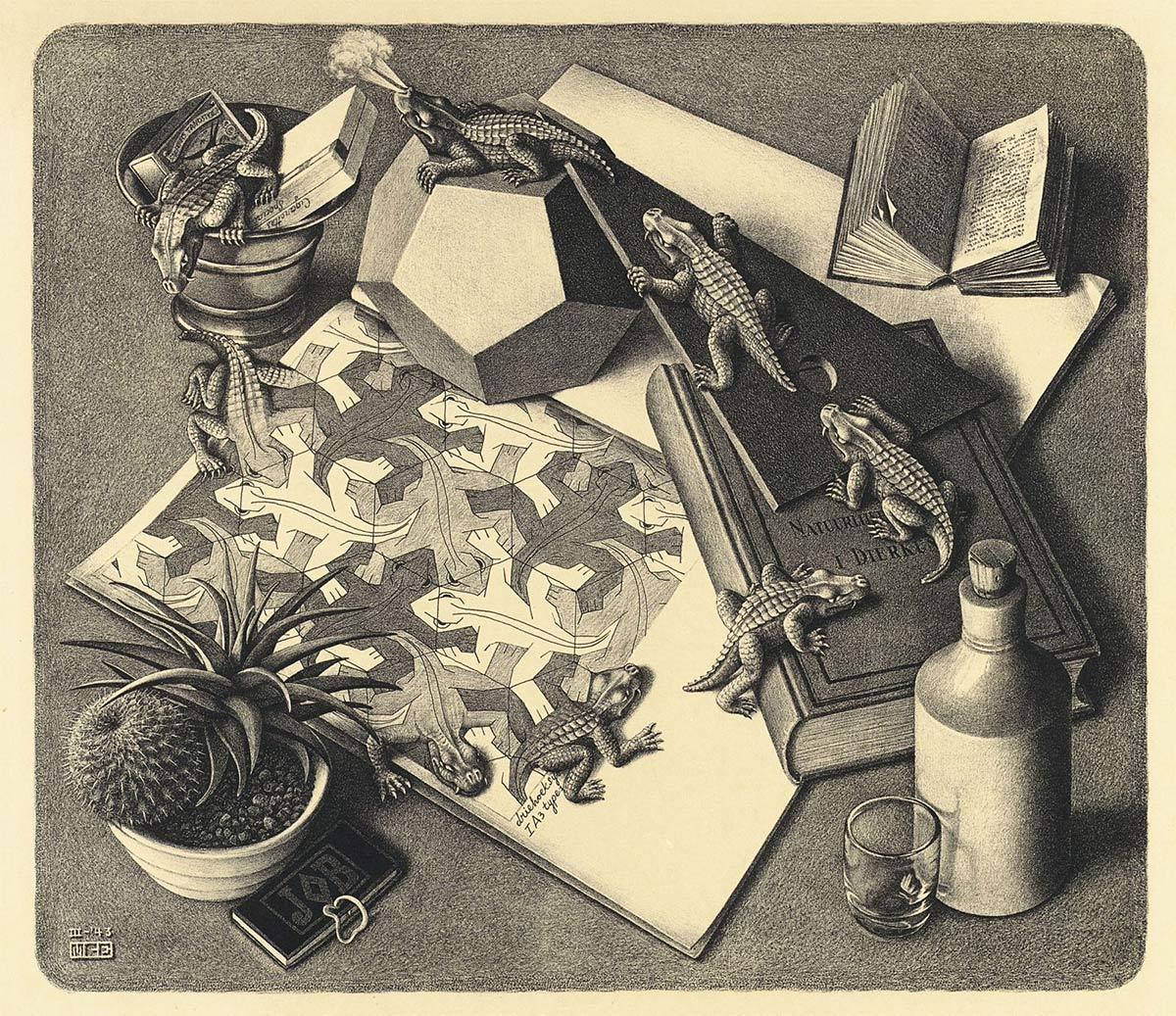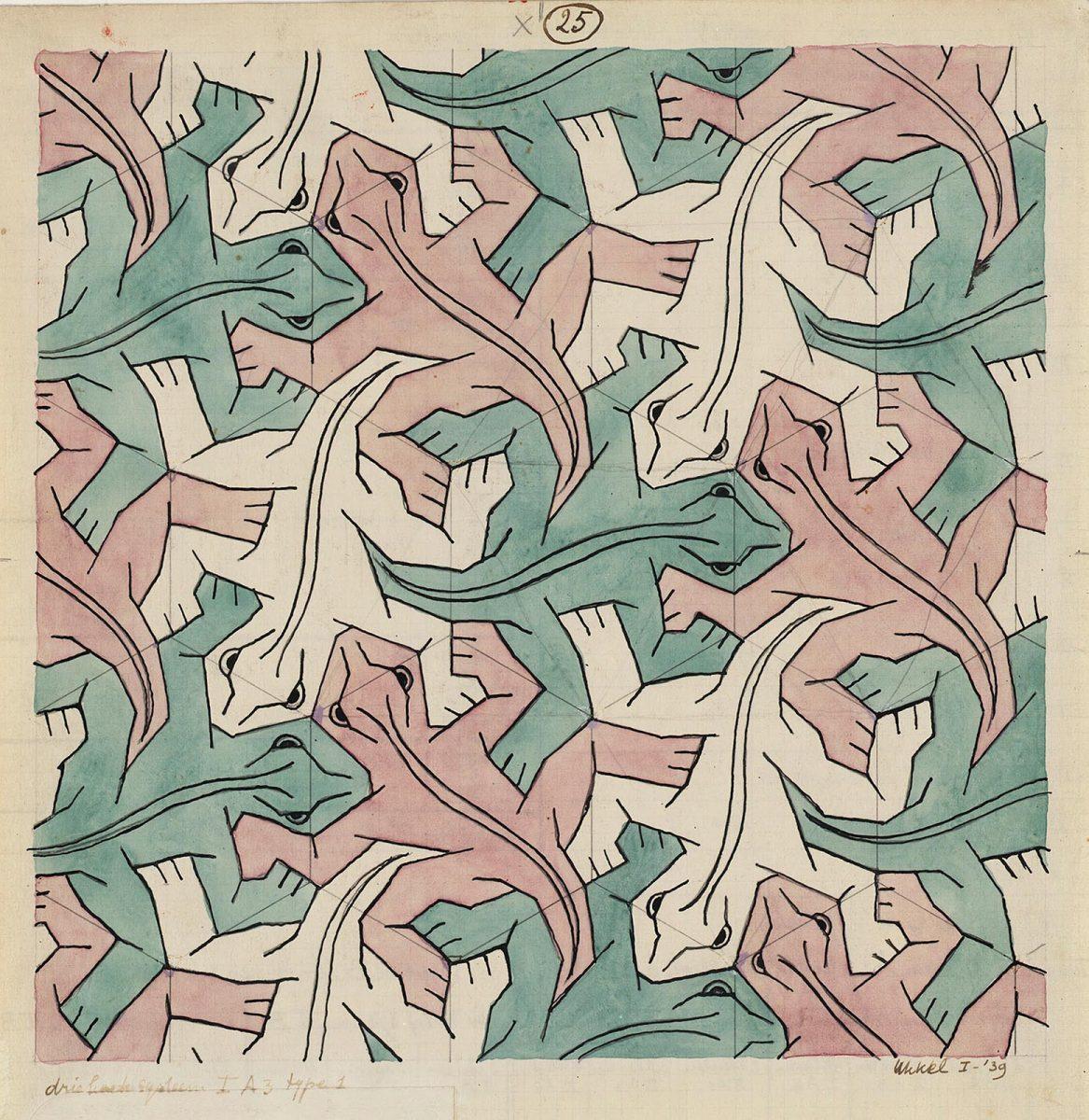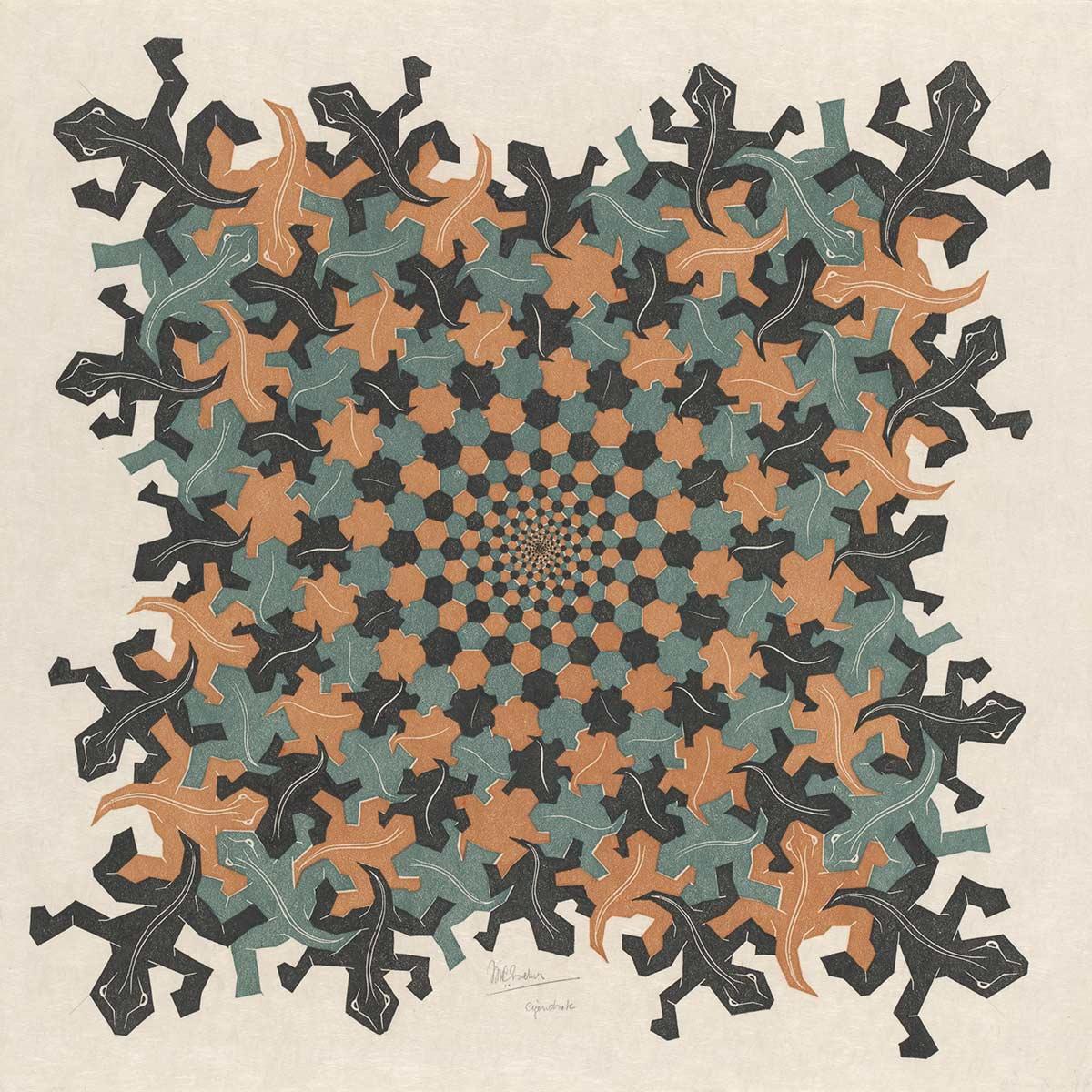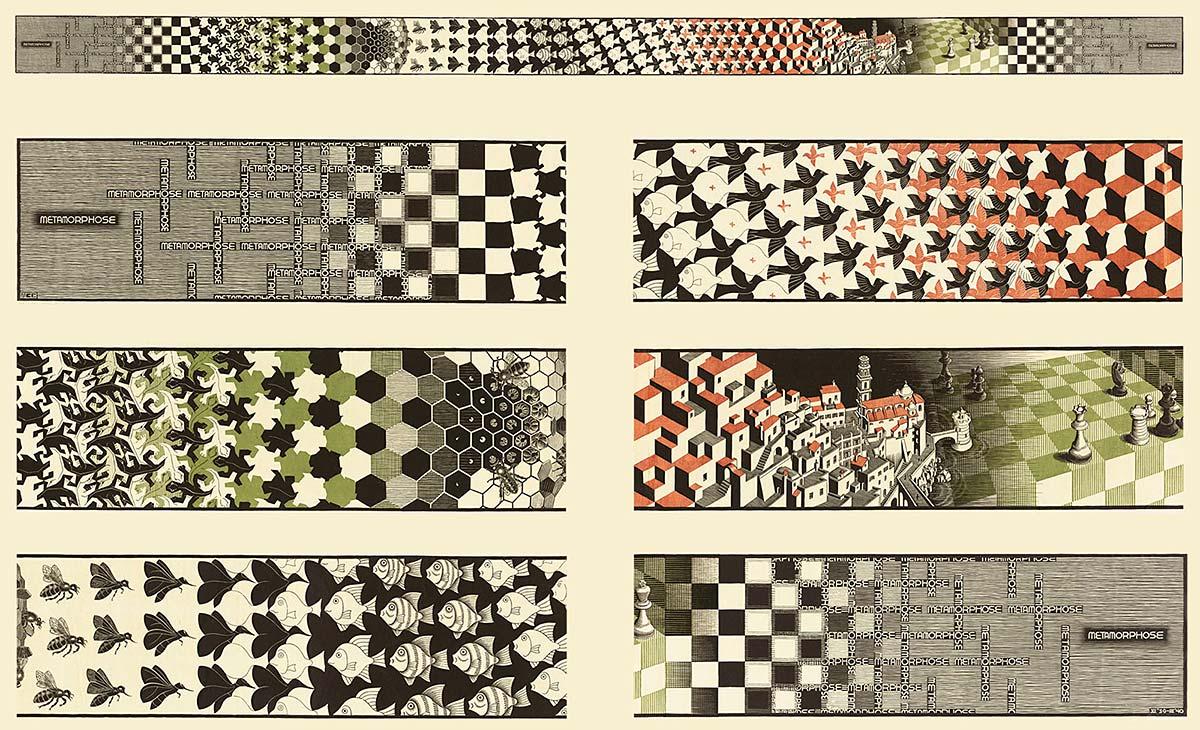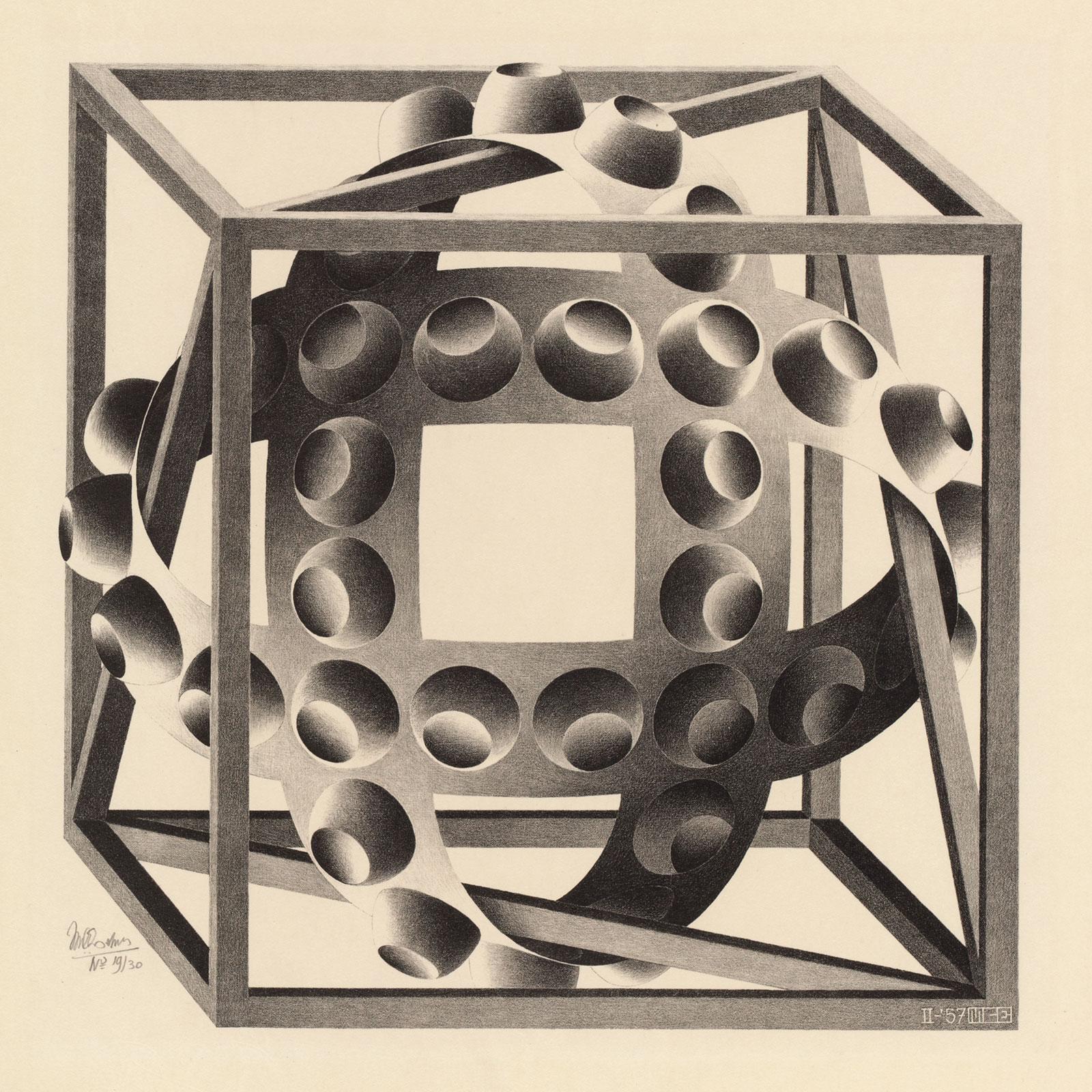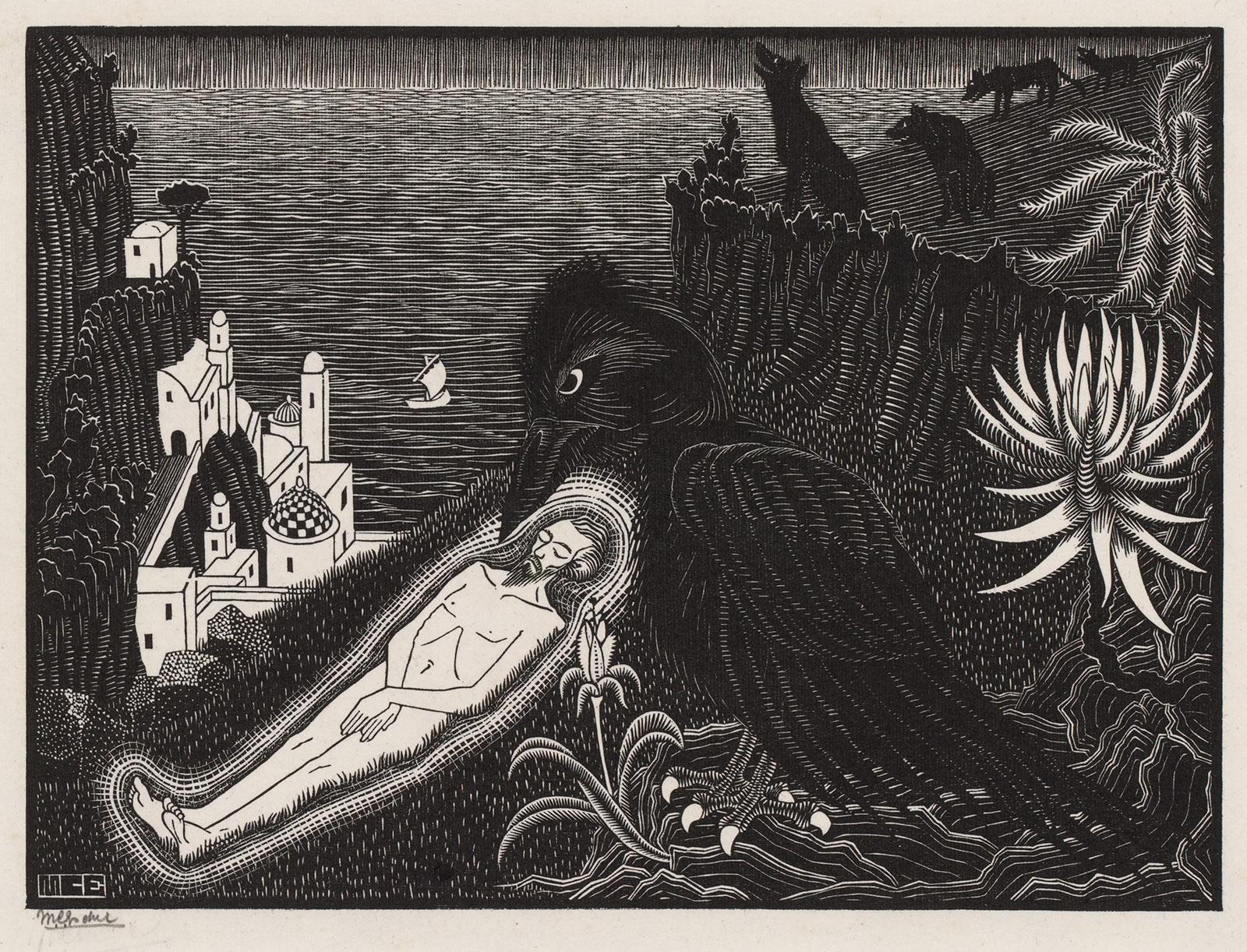'On the page of an opened sketchbook a mosaic of reptiles can be seen, drawn in three colours. Now let them prove themselves to be living creatures. One of them extends his paw out over the edge of the sketchbook, frees himself fully and starts on his path of life. First he climbs onto a book, walks further up across a smooth triangle and finally reaches the summit on the horizontal plane of a dodecahedron. He has a breather, tired but satisfied, and he moves down again. Back to the surface, the ‘flat lands’, in which he resumes his position as a symmetrical figure. I was later told that this story perfectly sums up the theory of reincarnation.'
